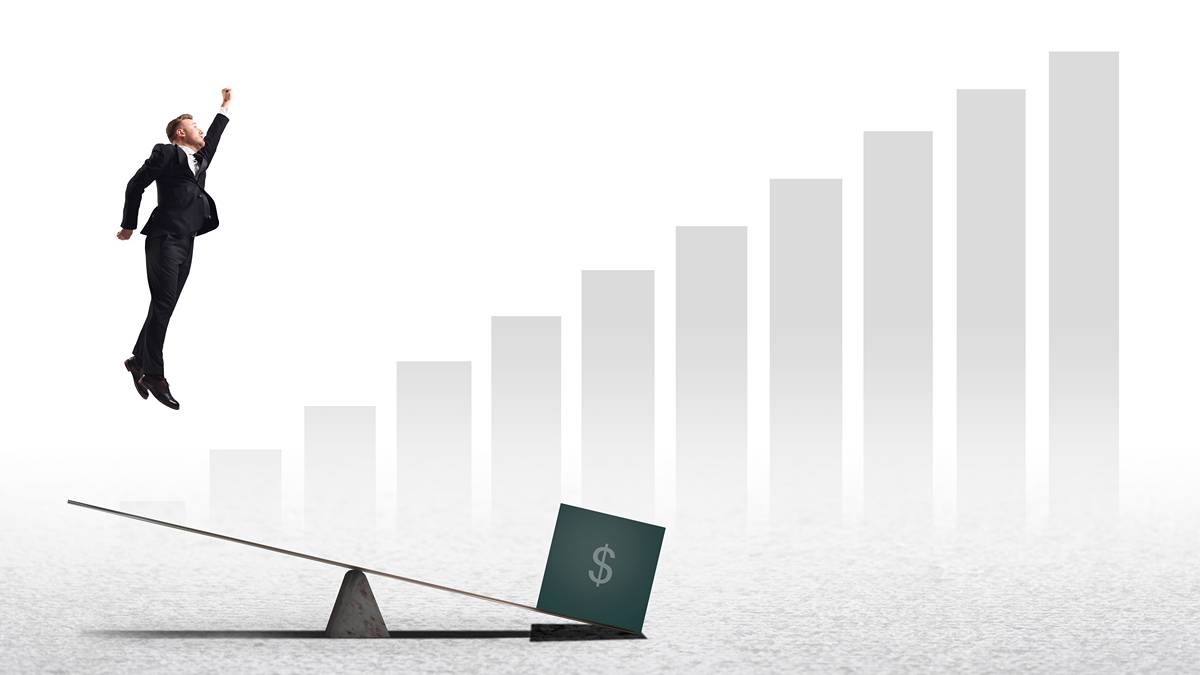CFDs 101: Understanding the risks and potential rewards of short-term, high-leverage trades

It's prudent to understand the risks before jumping into leverage. Pic via Getty Images
- A CFD lets traders speculate on the difference between an instrument’s opening and closing price
- CFDs can be traded with up to 500:1 leverage, although they’re limited to 30:1 in Australia
- The ASIC requires all brokers to include negative balance protection, meaning you cannot lose more than your trading account balance
Special Report: While Contracts for Difference (aka CFDs) have been traded widely since the early 1990s, you’d be forgiven for not knowing what a CFD is or what it does. CompareForexBrokers director Justin Grossbard joins us to explain more.
Unlike traditional market investment or speculation, where you own the underlying asset, CFDs are derivatives. This means you don’t own the asset, but instead agree to exchange the difference between its opening and closing value with a broker.
CFDs are used to speculate on whether the price of your chosen financial product – like a commodity, a currency pair, a share or a cryptocurrency – will rise or fall. As CFDs are derivatives, no physical goods or securities are exchanged.
If you hold a CFD overnight, you will pay a swap fee (also called an overnight or rolling fee). These fees can impact profits if you hold the CFD too long, for this reason, CFDs tend to be short-term contracts.
Typically you’ll open them for only a few hours – or a couple of days at most, so the timeframe is much shorter than with long-term investments.
CFDs are traded through over-the-counter exchanges in Europe, Australia, and Asia. However, US retail traders are barred from accessing them by US law.
The leverage equation
So, what’s the difference between a CFD and taking a long or short position on a security product like stocks? Apart from the ownership difference, trading CFDs allows for much higher levels of leverage.
Unless you qualify as a sophisticated investor, leverage or margin trading with securities is more limited, generally being about five to one (5:1) or 20% margin.
That is, for every dollar of your own money spent, you can use five loaned dollars to leverage your position. So you would be trading with six dollars instead of one.
With CFDs, you can expect brokers (including those in New Zealand) to accept leverage levels to be far more generous.
ASIC, the Australian Securities and Investments Commission which regulates financial markets in Australia, limits leverage for retail traders to 30:1 for Forex pairs and 5:1 for stocks. Sophisticated investors, however, can access 500:1.
Let’s take the Australian dollar as an example, and look at why leverage is important.
The Aussie dollar fell to 59.64 American cents on Monday April 7 – its lowest point since April 2020. This represents a 6% drop in a single day.
In currency terms, that’s a huge fall – headlines have used words like “nightmare” and “plunging” to describe it. But in real terms, it’s a pretty small movement – just 4.36 cents.
It can be difficult to make any kind of profit from movements as small as that unless you’re cashed up to the ears, so this is where leverage comes in. Traders willing to increase their risk for potential reward can control a larger position with less of their own capital.
As CompareForexBrokers director Justin Grossbard noted to Stockhead, “Leverage is one of the things you do not generally get on the share market”.
Using leverage, if you can turn one dollar into 30, you’re also turning a 4.36-cent bump into a $1.30 jump.
In other words, leveraged CFDs offer short-term trading with very high potential margins, without holding a piece of the underlying asset.
Negative balance protection
Of course, leverage is a two-faced beast. Borrowing money to make a trade more effective is all well and good, until price movements go south. Then you’re on the hook for the entire amount and with high leverage this amount can be crippling unless you have the right risk management tools or protection.
Fortunately, ASIC requires all brokers to offer negative balance protection to all Australian clients.
“Something very important to understand is that due to ASIC regulations, you can’t lose more than the amount that you deposit in your trading account” Grossbard explained.
“You can’t go into something called ‘negative balance’. Basically, you can’t end up owing money to the broker if a leveraged trade goes wrong.”
With ASIC-regulated brokers, there are strict rules governing CFD trading accounts. These rules limit losses to whatever was originally deposited into the account. While you can make profits well above your inputs, you can’t be called to fill contract deficits that exceed your trade balance.
Grossbard says the best way to approach CFD trading is with a conservative, but optimistic attitude.
“Trade with a reasonable amount that you’re willing to lose,” he said. “Keep in mind that you have that negative balance protection, and see how you go.”
Trading volatile products in uncertain times
Chaos is a ladder, they say, and there’s certainly plenty of chaos to go around at the moment.
With global markets yo-yoing between surge and crash from one day to the next, there’s a lot of potential for losses – but the massive swings also present opportunities for those willing to bear with some risk.
If you follow a traditional market speculation route, however, you only have limited ways to bet against the market. Mostly, this is restricted to taking short positions.
Shorting stocks still requires traders to be able to buy back assets at a lower price. This is why CFDs can be a more attractive choice. They allow you to trade on the price difference created between market open and close alone.
“If you’re willing to take the risk, you can potentially make the highest gains in CFD markets – and people can make multiples of what they’ve got in their trading account,” Grossbard said.
Justin suggests carefully considering your individual risk appetite in uncertain times and ensuring you’re not trading more than you can afford to lose.
“One of the best things about CFDs, for me, is the variety of markets, both here in Australia and overseas,” Grossbard explained. “From shares and commodities, to indices and crypto… it really gives you a lot of options.”
This article was developed in collaboration with CompareForexBrokers, a Stockhead advertiser at the time of publishing.
This article does not constitute financial product advice. You should consider obtaining independent advice before making any financial decisions.
Related Topics
UNLOCK INSIGHTS
Discover the untold stories of emerging ASX stocks.
Daily news and expert analysis, it's free to subscribe.
By proceeding, you confirm you understand that we handle personal information in accordance with our Privacy Policy.








